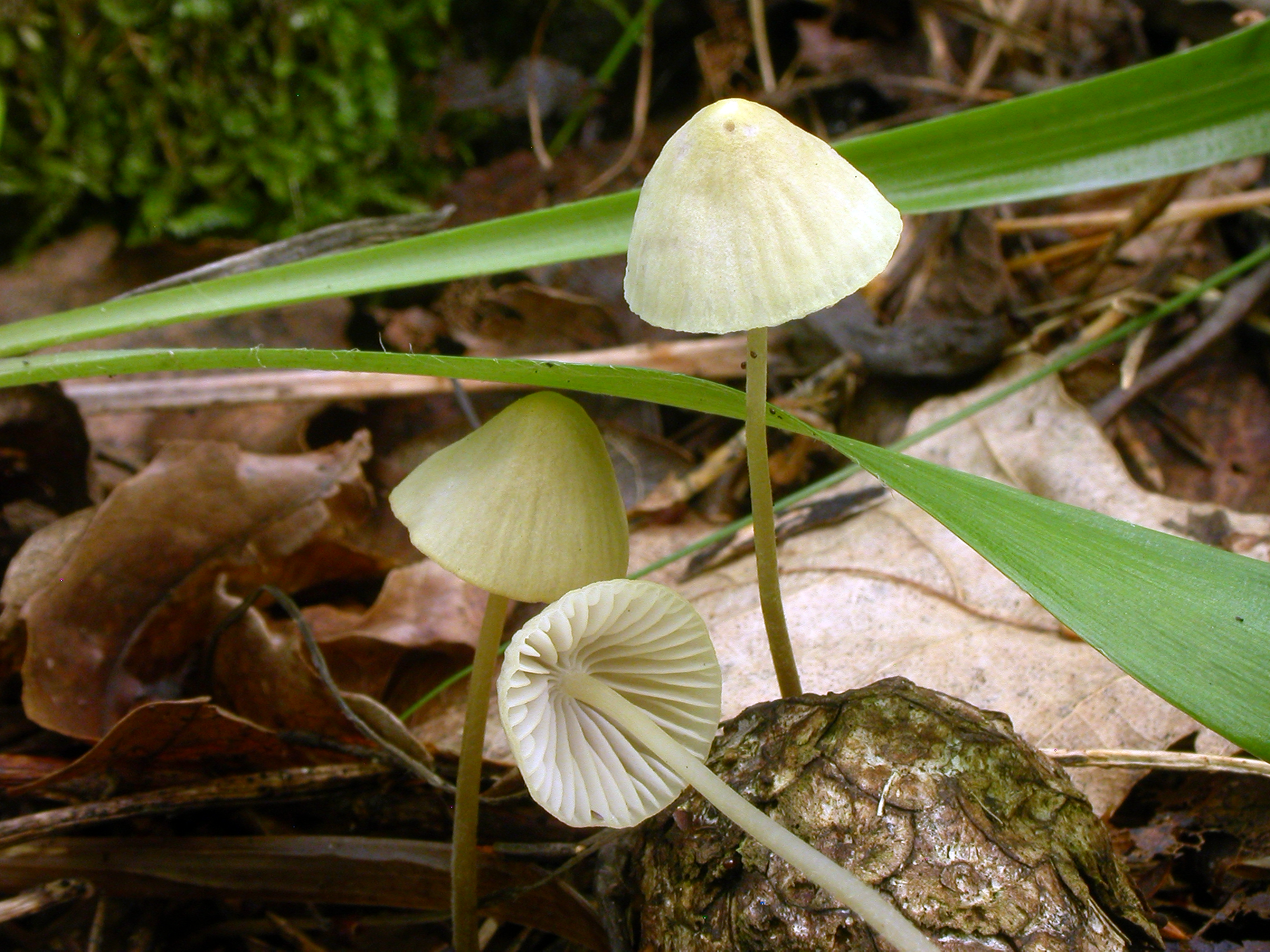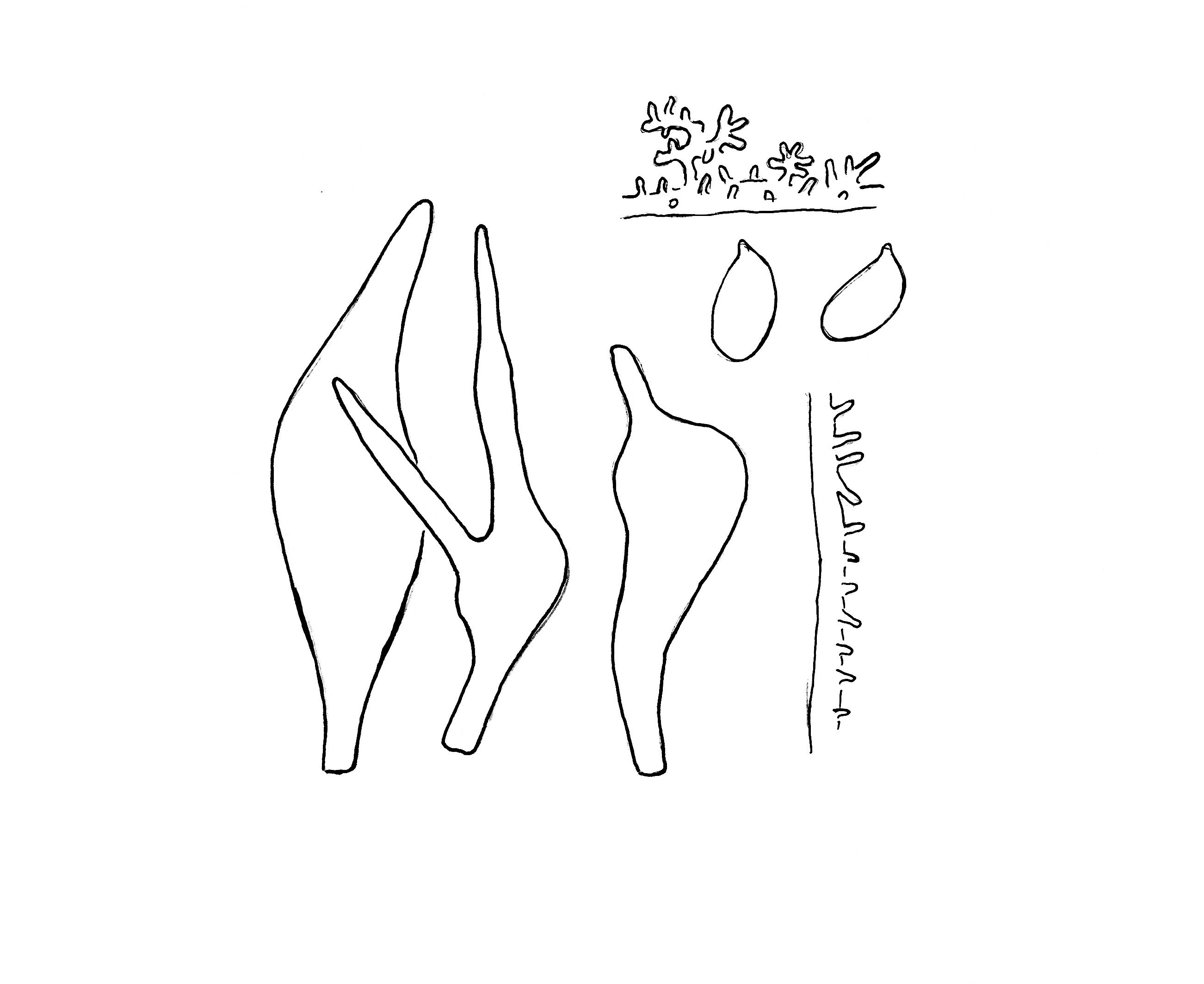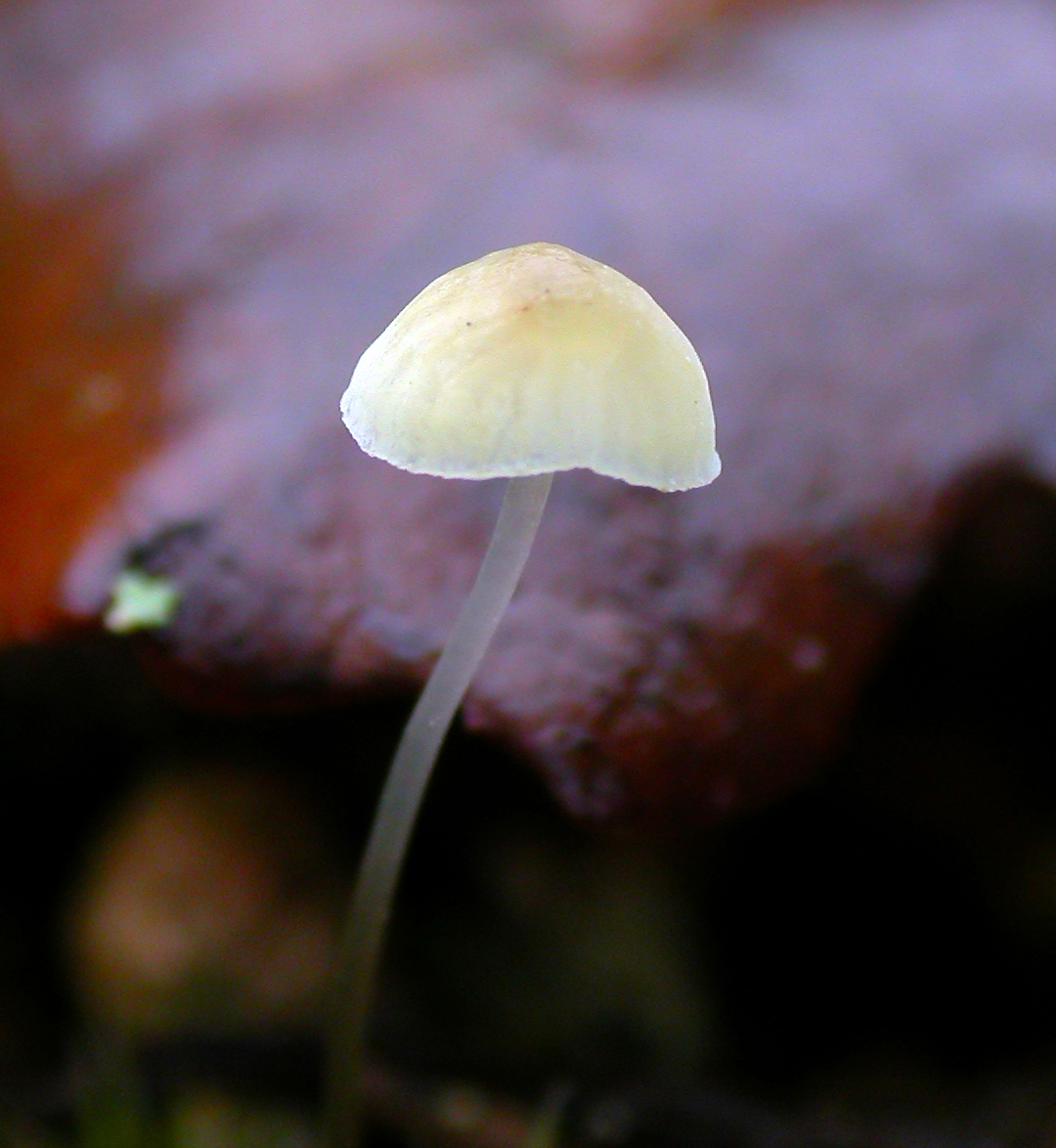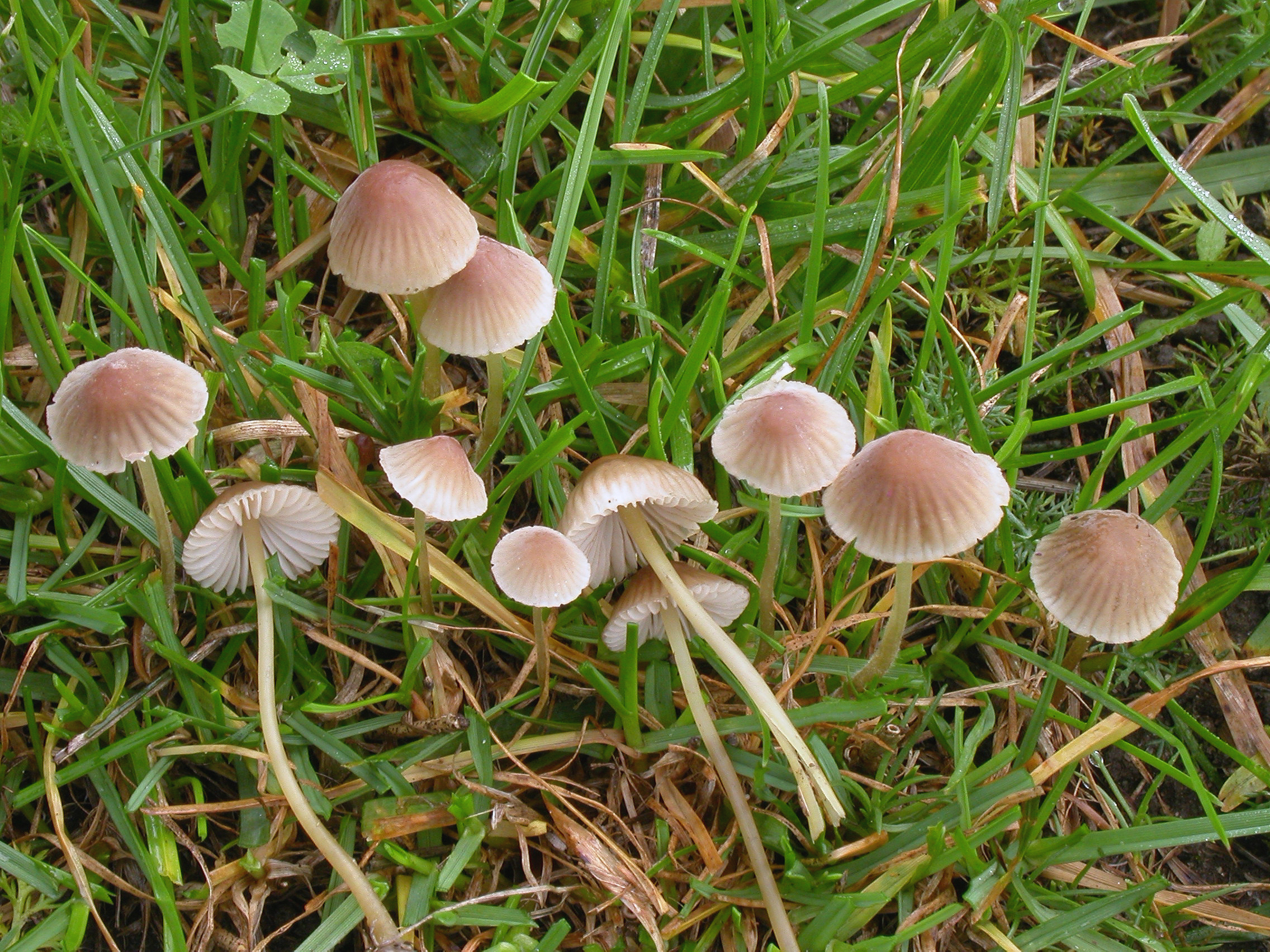Mycena citrinomarginata
Mycena citrinomarginata
Description
Hypha of the pileipellis, spores, cheilocystidia and hypha of the cortical layer of the stem.
Cap 5-20 mm across, conical to convex, sulcate, translucent-striate, hygrophanous, sometimes somewhat lubricous, glabrous, colouration very variable, pale yellowish, greenish yellow, olivaceous yellow, pure yellow, yellowish with a brownish grey shade, greyish green, greyish with a yellow tinge, darker at the centre, paler towards the margin. Gills 15-21 reaching the stem, adnexed, ± decurrent with a short tooth, dingy white to pale grey-brown, the edge citrine to deep yellow, less frequently pale yellowish to whitish. Stem 25-85 x 0.5-1.5 mm, cylindrical, fragile, equal for the greater part, broadened below, minutely puberulous all over, glabrescent, pale yellowish, greenish yellow, olivaceous green, greyish, paler above, darker below, yellow-brown to greyish brown or sepia brown; base usually densely covered with long, coarse, flexuous, whitish fibrils, often far up the stem. Odour indistinctive, raphanoid or somewhat nitrous. Taste mild. Basidia 27-32 x 8-10 µm, clavate, 4-spored, with sterigmata up to 10 µm long. Spores 8-12(-14.5) x 4.5-6(-6.5) µm, pip-shaped to almost cylindrical, amyloid. Cheilocystidia 30-65 x 5-18 µm, clavate, fusiform, lageniform, utriform, with yellow to colourless contents, with or without a neck or with one or more apical and/or lateral, simple to furcate or somewhat branched excrescences. Pleurocystidia absent. Lamellar trama dextrinoid. Hyphae of the pileipellis 2-4.5 µm wide, covered with simple to much branched excrescences 2-13.5 x 1-2 µm, forming dense masses. Hyphae of the cortical layer of the stem 2-2.5 µm wide, smooth or covered with few to numerous simple to furcate excrescences, the terminal cells 2.5-10 µm wide, covered with rather coarse excrescences. Clamps present in all tissues.
Ecology and distribution
Gregarious or scattered in many different habitats, in lawns and open areas, under both conifers and deciduous trees, among terrestrial mosses, on moss covered trunks. Summer to autumn. Widespread in Norway but generally not very common.



